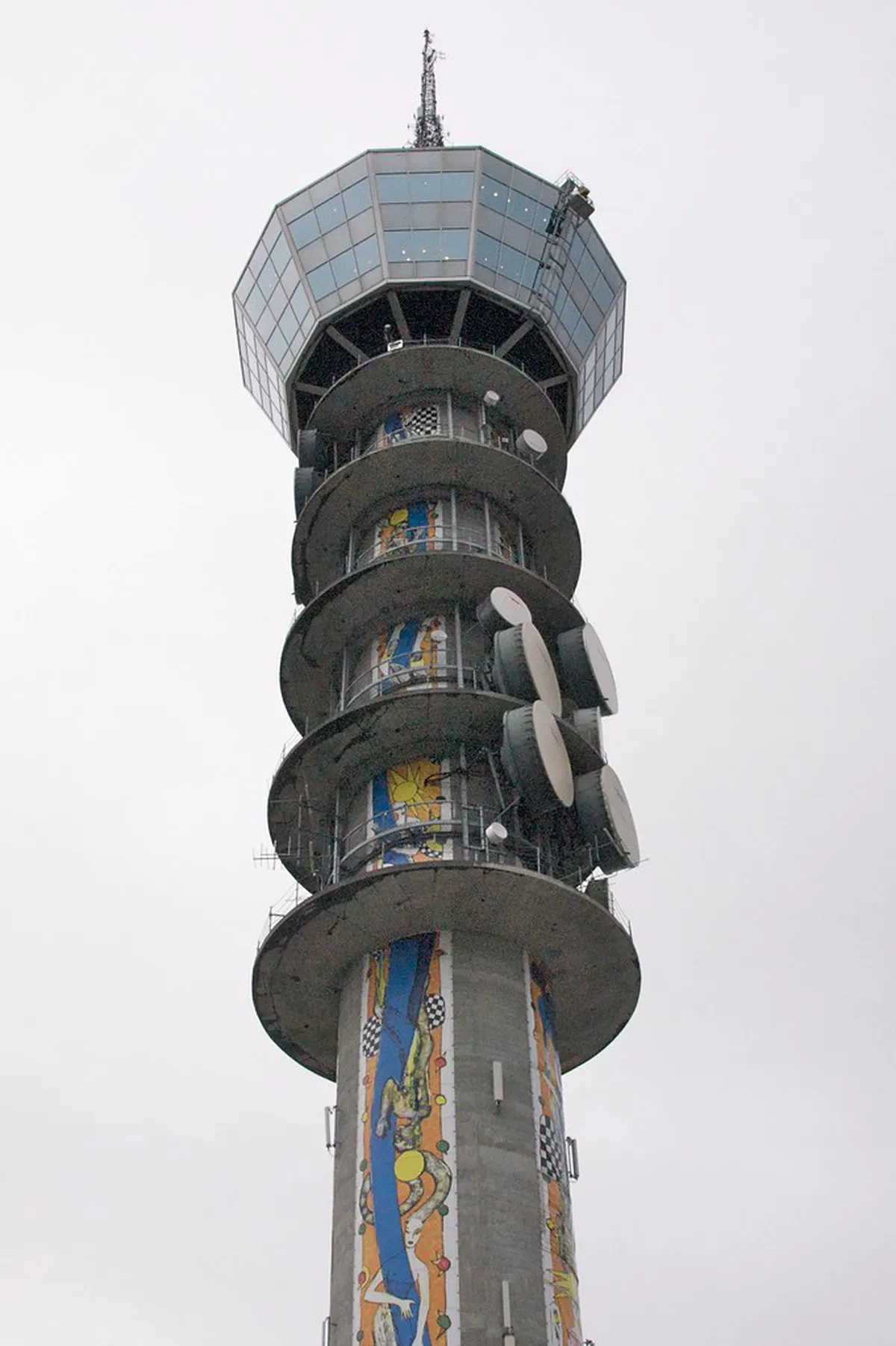Tokyo Street Food Guide: 20 Snacks You Can't Miss
Tokyo's street food scene offers a delectable window into Japanese culinary culture, where seasonal ingredients, meticulous preparation, and artistic presentation converge in portable, affordable bites. From savory to sweet, traditional to trendy, these street-side treats provide an accessible way to experience Japan's food obsession without the formality of restaurant dining. Our guide introduces 20 must-try Tokyo street foods and the best spots to find them across the city. Find the best shopping experiences with our Tokyo shopping guide.

Savory Street Snacks
Plan this trip faster with our free online itinerary maker. Get a personalized day-by-day plan in minutes.
1. Takoyaki (たこ焼き)
Takoyaki tops the list of must-try Japanese street foods, featuring spherical wheat batter dumplings filled with octopus pieces, pickled ginger, and green onion. Cooked in specialized molded pans, these hot, crispy-outside, gooey-inside balls come topped with takoyaki sauce, Japanese mayonnaise, bonito flakes, and seaweed powder. For authentic takoyaki, head to Gindaco in Harajuku or the food stalls at Ameya-Yokochō market near Ueno Station, where you can watch skilled vendors rapidly flip dozens of takoyaki balls with specialized picks. Plan your perfect trip with our Tokyo itinerary. Plan your Tokyo trip with Tokyo in Tokyo.
2. Yakisoba (焼きそば)
This stir-fried noodle dish is a festival staple throughout Japan. Yakisoba features wheat noodles grilled with cabbage, carrots, pork, and seasoned with a sweet-savory sauce similar to Worcestershire. Often garnished with aonori (seaweed powder), beni shoga (red pickled ginger), and sometimes mayonnaise, yakisoba is commonly served in a paper boat with chopsticks. For excellent yakisoba, try the vendors at Nakamise Street leading to Senso-ji Temple in Asakusa or during seasonal festivals (matsuri) throughout Tokyo. Map out your exploration with our Tokyo itinerary. Find the best shopping experiences with our Tokyo shopping guide.
3. Okonomiyaki (お好み焼き)
Sometimes described as a Japanese savory pancake, okonomiyaki means "grilled as you like it." The Tokyo version typically includes a cabbage-rich batter mixed with your choice of ingredients (often seafood or pork belly), grilled, and topped with okonomiyaki sauce, mayonnaise, bonito flakes, and aonori. While often served in specialized restaurants, street-style versions can be found at Okonomimura in Nihonbashi and at yatai stands during festivals. Some vendors allow you to customize your okonomiyaki with your preferred mix-ins. Arrange your visit using our Tokyo itinerary. Create your ideal travel schedule with our Tokyo itinerary.
4. Gyoza (餃子)
Japanese dumplings inspired by Chinese potstickers, gyoza feature thin wrappers filled with a mixture of ground pork, cabbage, garlic, ginger, and scallions. The street version is usually pan-fried for a crispy bottom while maintaining a juicy filling. Dip them in a mixture of soy sauce, vinegar, and chili oil for the perfect bite. Find excellent street gyoza at Harajuku Gyozaro on Takeshita Street or from vendors in the Ameyoko Market area. Enhance your Tokyo experience with our Tokyo itinerary. Enhance your Tokyo experience with our Tokyo itinerary.
5. Korokke (コロッケ)
Japan's adaptation of the French croquette, korokke features a filling of mashed potato mixed with ingredients like ground meat, seafood, or vegetables, breaded in panko crumbs and deep-fried to golden perfection. These crispy-on-the-outside, creamy-on-the-inside treats are particularly popular as an after-school snack. Look for them at Niku no Hanamasa in Shibuya or at traditional depachika (department store food halls) like the one in Shinjuku Isetan. Find the best shopping experiences with our Tokyo shopping guide.
Pro Tip: Street food in Tokyo is meant to be eaten while standing at the stall or walking. Unlike some other Asian countries, eating while walking on busy streets is generally discouraged, so look for designated eating areas near food stalls. Arrange your visit using our Tokyo itinerary. Enhance your Beppu experience with our Beppu itinerary.
Skewered Delights
6. Yakitori (焼き鳥)
These grilled chicken skewers represent the perfect Japanese street food: simple, flavorful, and designed to accompany drinks. Yakitori chefs grill various chicken parts over binchotan charcoal, seasoned with either shio (salt) or tare (sweet soy glaze). While you can find high-end yakitori restaurants, street versions remain popular at places like Memory Lane (Omoide Yokocho) in Shinjuku or the yatai stalls under the train tracks at Yurakucho. Try classic varieties like negima (chicken and green onion) or the more adventurous hatsu (chicken heart). Design your dream vacation using our Takayama itinerary. Enhance your Hiroshima experience with our Hiroshima itinerary.
7. Kushikatsu (串カツ)
These deep-fried breaded skewers feature variety of ingredients, from meats and seafood to vegetables like eggplant and bell peppers. Kushikatsu is typically served with a communal dipping sauce (with strict rules against double-dipping). Find great kushikatsu at Tanuki Alley in Ueno or at stalls in Asakusa's side streets, where vendors offer assorted skewers you can select individually. Discover the best local cuisine with our Kagoshima food guide.
8. Tsukune (つくね)
These juicy Japanese chicken meatball skewers are a yakitori subset that deserves special mention. Tsukune combines ground chicken with ingredients like minced onion, egg, panko, and seasonings, then is grilled and brushed with tare sauce. The Ebisu Yokocho market houses several stalls serving excellent tsukune, often accompanied by an egg yolk dipping sauce.
Sweet Street Treats
9. Taiyaki (たい焼き)
These fish-shaped waffle cakes are filled with sweet red bean paste (traditional), custard, chocolate, or sweet potato cream. Taiyaki are cooked in fish-shaped molds until golden and crisp outside while maintaining a soft interior. For exceptional taiyaki, visit Naniwaya Sohonten in Azabu-Juban, the oldest taiyaki shop in Tokyo, or Wakaba in Akihabara for unique flavors like matcha cream.
10. Dango (団子)
These chewy sweet rice dumplings served on skewers come in various flavors and colors. Dango are typically three to five rice flour dumplings on a stick, with varieties including mitarashi (glazed with sweet soy sauce), anko (topped with red bean paste), and hanami dango (pink, white, and green colors for cherry blossom season). Find authentic dango at traditional sweet shops like Nihonbashi Dango or from seasonal stalls in Ueno Park during cherry blossom season.
11. Crepes (クレープ)
While not traditionally Japanese, Tokyo has embraced crepes as a beloved street food, particularly in Harajuku. These paper-thin pancakes are filled with combinations of fruits, whipped cream, chocolate, ice cream, and sometimes even savory ingredients, then folded into a portable cone shape. The epicenter of Tokyo's crepe culture is Takeshita Street in Harajuku, where shops like Marion Crepes and Angel's Heart offer dozens of creative variations. Plan your Tokyo trip with Tokyo attractions.
12. Kakigori (かき氷)
Perfect for Tokyo's humid summers, kakigori is shaved ice drizzled with flavored syrups, condensed milk, and toppings that can include red beans, mochi, or fresh fruit. Modern versions feature ultra-fluffy ice textures and gourmet syrups. During summer months, look for kakigori stands in festivals, parks like Yoyogi, and specialized shops such as Ichiniisan in Roppongi or Himitsudo in Yanaka.
Regional Specialties & Unique Finds
13. Monjayaki (もんじゃ焼き)
A Tokyo specialty, monjayaki is a runnier cousin of okonomiyaki. The batter is much thinner, resulting in a texture similar to melted cheese. Ingredients are chopped finely, mixed with the liquid batter, and cooked on a hot griddle where diners typically cook it themselves and eat it directly off the grill using small metal spatulas. Visit Tsukishima Monja Street, where dozens of specialized shops serve this uniquely Tokyo dish.
14. Menchi Katsu (メンチカツ)
These deep-fried minced meat cutlets feature seasoned ground beef and pork mixed with onions, breaded with panko, and fried until golden. Menchi katsu is often sold at butcher shops as a way to use trim meat. For an excellent version, visit Satsuki in Kichijoji or Niku no Hanamasa branches throughout Tokyo.
15. Imagawayaki/Obanyaki (今川焼き/大判焼き)
These round, pancake-like treats are filled with sweet fillings, typically red bean paste, but also custard or chocolate. Cooked in special round molds, they're similar to taiyaki but disk-shaped. Look for them at Kanda Darumaya near Akihabara or from traditional vendors at shrine festivals.
16. Oden (おでん)
During cooler months, oden stalls appear throughout Tokyo. This winter comfort food consists of various ingredients like daikon radish, boiled eggs, konjac, and fishcakes simmered in a light dashi broth. Convenience stores like 7-Eleven and Lawson offer quality oden where you can select items individually, or try specialty oden shops like Otako in Asakusa.
17. Nikuman (肉まん)
These steamed buns filled with seasoned pork are perfect for cold weather snacking. Nikuman (meat buns) and their variants like pizzaman or curryman offer portable, warming satisfaction. During winter, convenience stores sell freshly steamed nikuman, or visit Chinese-influenced areas like Yokohama Chinatown for artisanal versions.
18. Senbei (煎餅)
These crispy rice crackers come in countless flavors from sweet to savory, often grilled fresh at specialty shops. Senbei can be seasoned with soy sauce, nori, chili, or even coated with sugar or chocolate. Asakusa's Nakamise Street has several senbei shops where you can watch the crackers being hand-grilled over charcoal.
19. Age-Manju (揚げ饅頭)
These deep-fried sweet buns contain anko (red bean paste) inside a crispy exterior. Age-Manju offers a delightful textural contrast between the crunchy outside and sweet, soft filling. Find them at Asakusa Kokonoe near Senso-ji Temple, where they've been making them since 1870.
20. Onigiri (おにぎり)
While commonly found in convenience stores, freshly made onigiri (rice balls) from specialty shops offer an elevated street food experience. Filled with ingredients like umeboshi (pickled plum), salmon, or tuna with mayonnaise, they're wrapped in nori and shaped into triangles or cylinders. Onigiri Asakusa Yadoroku, Tokyo's oldest onigiri specialty shop, offers handmade versions with premium fillings.
Best Places for Tokyo Street Food
- Asakusa's Nakamise Street: Traditional Japanese street foods including ningyo-yaki, senbei, and various festival foods
- Ameya-Yokocho Market (Ameyoko): Diverse street foods from takoyaki to international options
- Tsukiji Outer Market: Seafood-focused street foods and fresh market eats
- Harajuku Takeshita Street: Sweet treats including crepes, cotton candy, and colorful desserts
- Omoide Yokocho (Memory Lane): Yakitori, oden, and other izakaya-style street foods
- Yurakucho Under-Track: Yakitori stalls and casual eateries beneath the train tracks
Tokyo's street food represents the perfect intersection of Japanese culinary craftsmanship and accessible dining. These portable delights offer budget-friendly ways to sample authentic flavors and understand local food culture. Whether you're drawn to savory skewers, crispy-fried treats, or sweet festival snacks, Tokyo's streets deliver gastronomic adventures in convenient, handheld portions.
For a deeper dive into Tokyo's culinary scene, explore our Tokyo Food Guide, or discover where to enjoy these treats after dark in our Tokyo Nightlife & Entertainment Guide.



